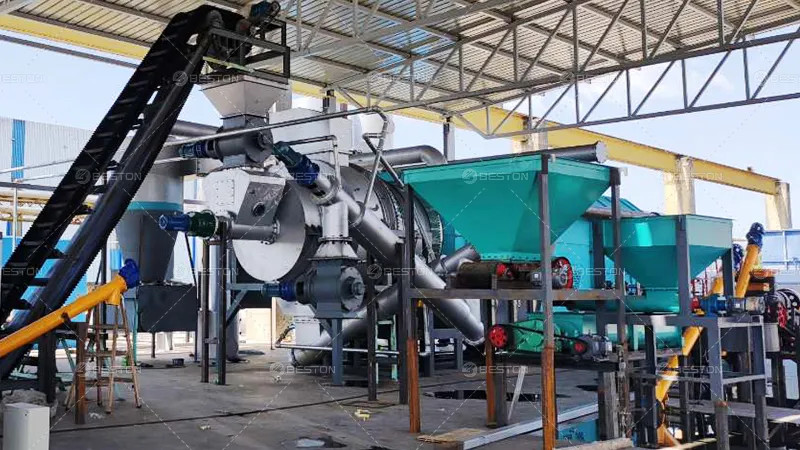Financial Viability of Biomass Pyrolysis Plant Deployment
Biomass pyrolysis presents a transformative approach to renewable energy generation and waste management. This thermochemical conversion technology decomposes organic material in an oxygen-deprived environment, yielding three primary products: biochar, bio-oil, and syngas. Each of these outputs holds commercial value, which underpins the economic appeal of a biomass pyrolysis plant. A thorough profit analysis reveals how this technology can yield substantial returns through product diversification, low feedstock cost, and alignment with global sustainability targets.
Capital Investment and Operating Framework
Initial investment for a biomass pyrolysis plant depends on scale, feedstock type, and the degree of automation. A medium-scale continuous pyrolysis system typically requires a capital outlay . This includes reactor installation, feedstock preprocessing units, gas handling systems, condensation infrastructure, and storage facilities.
Operational expenditures include labor, electricity, maintenance, and periodic replacement of wear components such as refractory lining and heat exchangers. However, the utilization of self-generated syngas to fuel the reactor significantly reduces external energy input, enhancing cost-efficiency.

Revenue Streams from Pyrolysis Products
1. Biochar Sales
Biochar, the solid residue of biomass pyrolysis, commands high market value due to its multifunctional properties. Its applications in soil amelioration, carbon sequestration, and livestock bedding translate into lucrative sales opportunities. Depending on quality and carbon content, biochar fetches $300 to $1,200 per metric ton. With consistent production, annual yields can range from 3,000 to 10,000 tons, offering a potential gross revenue of up to $12 million.
Markets for biochar are expanding rapidly due to growing interest in regenerative agriculture and voluntary carbon markets. Entities pursuing net-zero targets often purchase carbon credits derived from verified biochar sequestration projects, introducing an additional income layer through carbon offset monetization.
2. Bio-Oil Commercialization
Bio-oil, the liquid fraction obtained from condensation of pyrolysis vapors, is a high-energy-density fuel alternative. It is used directly in industrial boilers, modified diesel engines, or upgraded to transport-grade biofuel through hydroprocessing.
Prices vary based on viscosity, water content, and calorific value, but typical market rates hover between $0.40 and $0.90 per liter. A single plant can produce 5 to 15 million liters annually, representing a substantial revenue stream exceeding $4.5 million at conservative price points.
Bio-oil also has potential as a feedstock in chemical manufacturing and as a replacement for fossil-based bitumen in road construction, further broadening marketability.
3. Syngas Utilization
Syngas, composed primarily of carbon monoxide, hydrogen, and methane, is usually recirculated within the pyrolysis plant to sustain the endothermic reaction. However, surplus gas may be used to generate electricity via gas engines or turbines, thereby supplying power to local grids or offsetting on-site electricity needs.
This internal energy loop sharply reduces operational costs. Additionally, surplus electricity can be monetized through feed-in tariffs or net metering schemes, depending on regional energy policies.
Cost-Benefit Optimization
Several strategic factors influence profitability:
-
Feedstock sourcing: Agricultural waste, forestry residue, and sawdust often have negative cost (i.e., tipping fees for disposal), effectively reducing raw material expenses.
-
Plant automation: Advanced control systems reduce labor requirements and improve process stability, minimizing downtime and increasing throughput.
-
Residue valorization: Non-condensable gases and tars can be repurposed as heat sources or processed into specialty chemicals, enhancing yield efficiency.
Governmental incentives such as green energy grants, tax credits, and carbon offset programs further improve return on investment. In many jurisdictions, pyrolysis qualifies for clean energy certificates or emissions reduction funding.
Return on Investment Outlook
Assuming moderate production volumes and average market prices, a biomass pyrolysis plant can achieve payback within 3 to 5 years. Annual net profits can exceed $2 million, depending on operational scale and product diversification. Return on investment typically ranges between 20% and 35%, outperforming many conventional renewable technologies.